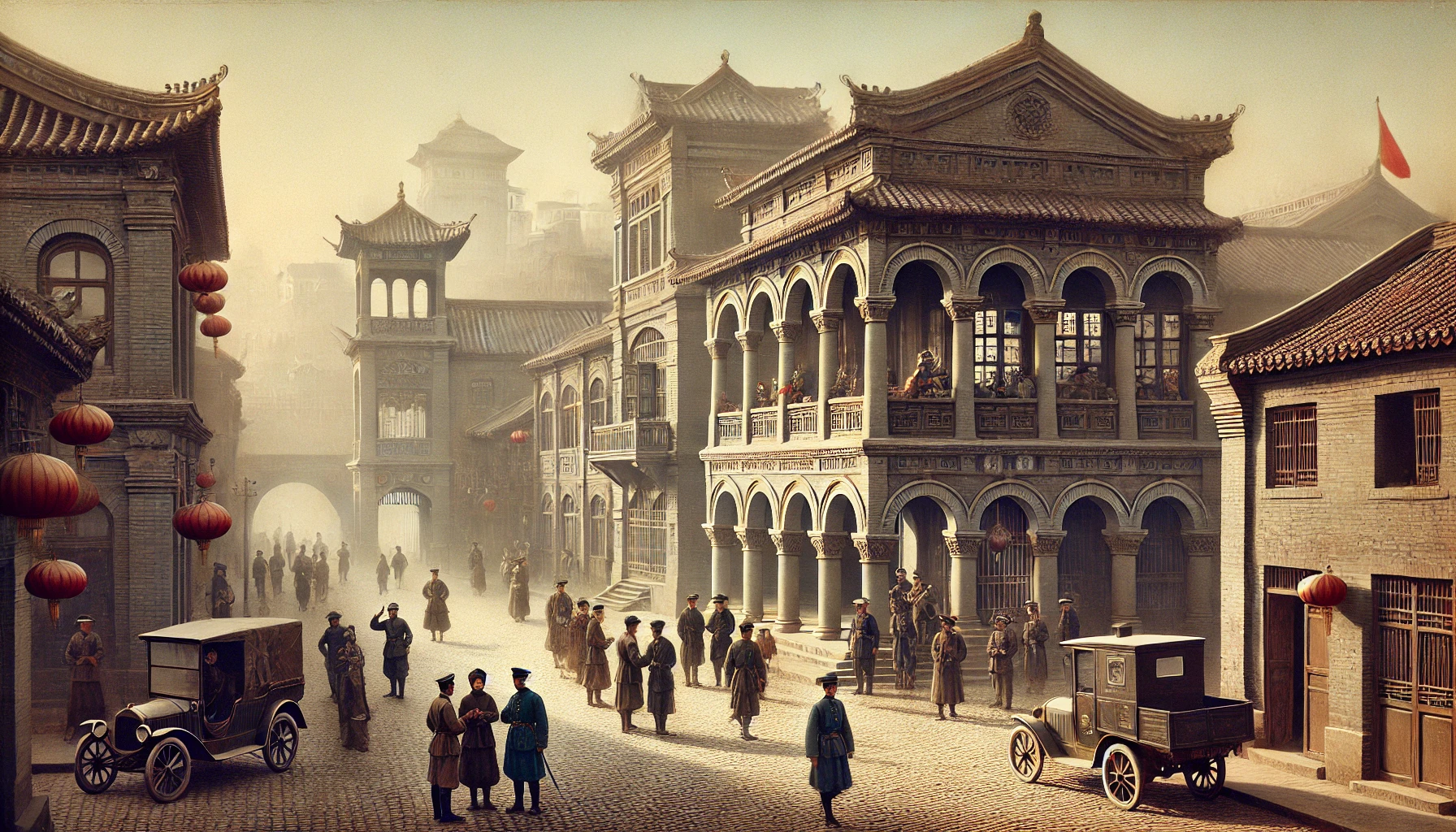The Italian concession of Tientsin
The smallest colony in Italian history

Tientsin was the symbol of the brief and limited Italian colonial adventure in Asia. A tiny concession and a hidden corner of Italy in China with Art Nouveau buildings, churches and monuments in full Northern Italian style. - Image generated with AI
The Italian concession in Tientsin, located in China along the Hai He River, represents a unique chapter in Italian history. Officially established on June 7, 1902, this small area was granted to the Kingdom of Italy in recognition of its involvement in the so-called "Boxer Rebellion" (1899-1901), a popular Chinese uprising against foreign powers and the Qing Dynasty.
Tientsin was one of China’s most strategically located and developed cities, positioned in the northern part of the country near Beijing and bustling with commercial activity. Unlike other European concessions, the Italian area was relatively small, covering about 46 hectares, yet it was quickly urbanized in line with the Italian style and taste of that era. Art Nouveau buildings, Catholic churches, and administrative offices reflecting typical northern Italian architecture were constructed, creating a “Little Italy” in Asia. Streets were named after Italian heroes and cities, and the Italian tricolor flew over key buildings. In reality, the Italian government showed limited interest in Tientsin, as the area primarily served as a symbol of Italy’s international prestige rather than holding strategic value comparable to other powers. Nonetheless, the small Italian community grew and became more established over the years, creating schools, associations, and a consortium to manage economic activities.
The concession’s decline began with World War II. When Italy entered the war in 1940, the Japanese (Italy’s allies in the Axis) occupied the concession, and following Italy’s defeat, China formally annexed the area in 1947. Today, only a few buildings remain from the Italian concession, including the Sacred Heart Church and several European-style structures. Tientsin remains an intriguing site for those interested in exploring a distinctive chapter of Italian colonial history.
Di Meo, Alessandro. Tientsin: La concessione italiana. Storia delle relazioni tra Italia e Cina (1866-1947). Ginevra Bentivoglio Publishers,Rome, 2015.
Giovanni Vacca, Marcello Muccioli, T'ien-tsin, in Treccani Encyclopedia, consulted on 27/10/2024.
Toniatti Francesco - Professor of History and Oriental Studies, Master of Arts in International Relations
2025-09-09
Salvatore Ciccarello
